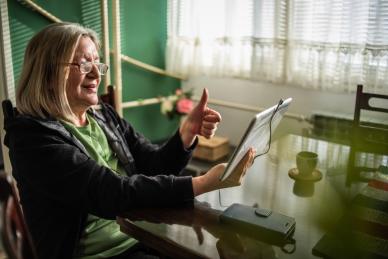
History: Origin and Development of Norfolk Parish Churches, Churchwardens' accounts in 16th Century
Course details
Course code
Q00017996Course date
Number of classes
1 sessionsTimetable
Branch
Swaffham BranchTutor
Guest SpeakerFee range
How you'll learn
Venue
Swaffham Community Centre (Swaffham)Iceni Partnership
Campingland
Swaffham
PE37 7RB
Level of study
Entry Levels 1,2,3: If you have never studied this subject before and you’re not confident in your skills, Entry levels are a good starting point.
Level 1: Covers basic skills and knowledge needed for this subject
Level 2: Building on basic knowledge or experience. Similar to Grade 4/ C at GCSE or O level in England or Standards in Scotland.
Level 3: Learn about the topic in-depth and have a broad range of skills. Independent working Equivalent to an A level in England or Higher in Scotland.
Beginners: A perfect introduction if you have no experience and skills in this subject.
Improvers: The next step if you have basic skills or knowledge but want to progress them further.
Advanced: Build on the solid experience and skills you have in this subject, applying your skills and knowledge in a more complex way.
Course overview
Course description
The Origins & Development of Norfolk’s parish churches
Although medieval parish churches might appear to have been in place from the founding of a settlement, some were not: they may have been spawned from a mother church under the “system of Minster Parochiae.“ This lecture investigates how, why and where parish churches were established and built and how contemporary fashions and population growth led to “make-overs” at various stages over the centuries.
Churchwardens’ accounts in the 16th century
From the early Gothic period until the dawn of the Reformation, new styles of church architecture accompanied a building-boom and Churchwardens played a vital role administering and accounting for the ecclesiastical estate. Many East Anglian parishes have detailed and fascinating accounts of activity and developments in their churches particularly during the turmoil caused by King Henry VIII and his successors. This presentation brings to life a subject which is far from dry!
The Spiritual & Practical use of water in medieval monasteries
Water was a spiritual necessity to the early religious psyche. But as medieval monasteries developed into more sophisticated communities another argument becomes dominant; that water and its management was principally a response to utilitarian and practical needs. This is no dry subject and the soul-cleansing ritual of water through to the flushing of latrines is examined, offering a fascinating insight into monastic life.
-
What financial support is available?
-
We don't want anything to stand in your way when it comes to bringing Adult learning within reach so if you need anything to support you to achieve your goals then speak to one of our education experts during your enrolment journey. Most of our courses are government funded but if you don't qualify or need alternative financial help to access them then let us know.
-
What other support is available?
-
All of our digital content, teaching and learning activities and assessments are designed to be accessible so if you need any additional support you can discuss this with the education experts during your enrolment journey and we will do all we can to make sure you have optimal access.

